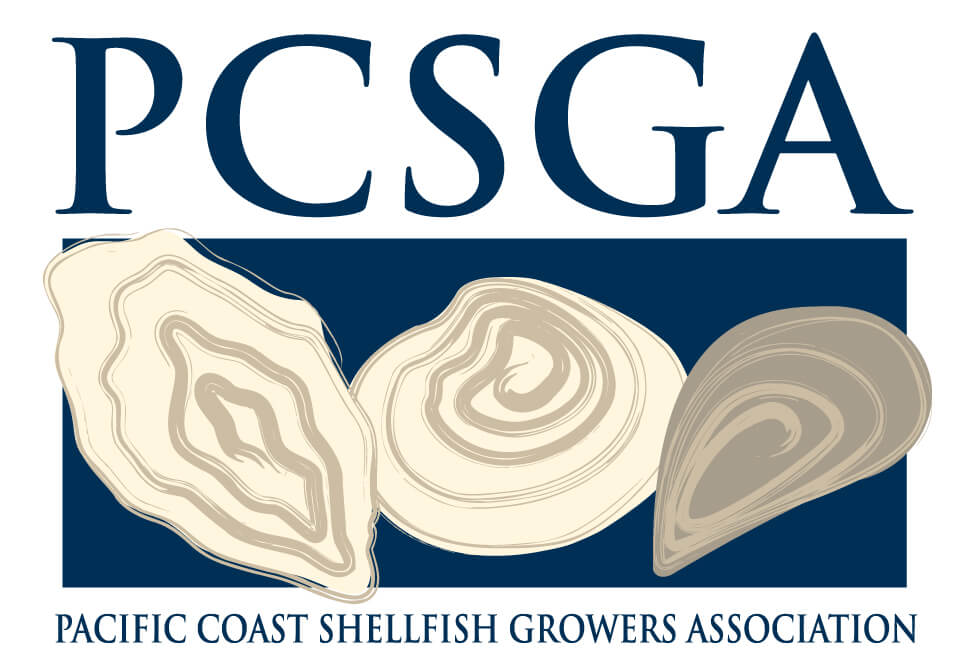By the very act of feeding, shellfish filter phytoplankton (nutrients including nitrogen and phosphorous) out of the water, cleaning and clarifying the water. In fact, a single clam can filter 50 gallons of water a day. Clearer water allows more sunlight to penetrate, which aids in the growth of crucial seagrasses, including eelgrass.
Without shellfish, algae can grow virtually unchecked, clouding the water and eventually falling to the bottom, where it decays, reducing the level of oxygen in the water. In addition, shellfish, like other carbon fixers such as corals, help reduce carbon dioxide levels by incorporating carbon into their shells.
Shellfish farming can only take place in the cleanest waters that have been certified under the National Shellfish Sanitation Program (NSSP), a stringent set of standards operated under the Food and Drug Administration. The NSSP standards led to the first estuarine/marine monitoring programs, and are the most stringent of all water quality classifications, far exceeding those required for swimming.
Regular monitoring is required to maintain certification of shellfish beds, and harvesting is banned if a problem is detected. These bans remain in effect until the problem is corrected and water quality monitoring indicates the area once again meets standards.
Below is a time-lapse video of Oysters cleaning water.
Clearer water allows more sunlight to penetrate, which aids in the growth of crucial seagrasses. Shellfish benefit seagrasses in another way; as shellfish digest the nutrients they filter from the water, a portion of those nutrients, including nitrogen, is expelled directly into the sediment, making it immediately available to seagrasses — essentially fertilizing it.
Besides promoting seagrass, including eelgrass, shellfish farming also helps support a diverse population of other marine species — both flora and fauna. For example, ground-cultured oysters and shell placed in the intertidal portion of West Coast estuaries has been shown to provide equal or better habitat than eelgrass for juvenile Dungeness crab (Eggleston and Armstrong 1995; Feldman et al. 2000). Shellfish themselves create three-dimensional structures that other marine species — including juvenile salmon — can use for forage and protection from predators.
In addition to the shellfish themselves, many components of the gear used in shellfish farming provide additional habitat. For example, a 2004 study led by Dr. Joseph DeAlteris found higher populations and a richer diversity of tideland species in and around shellfish beds than in seabed habitat with seagrass or bare seabed.
The lines used in culturing mussels support a rich variety of over 100 invertebrate species, as well as shiner perch and juvenile Pacific herring which are seasonally concentrated in this habitat.
Shellfish farms also provide critical foraging habitat for a large variety of waterbirds. For example, in a 2005 study of Humboldt Bay, Drs. Connolly and Colwell found more species of shorebirds and wading birds concentrated in tidelands with shellfish farms than those without.
Watch below to see how oysters and other shellfish can benefit tidal habitat:
Shellfish farming is the very essence of sustainability. The shellfish themselves sustain the habitat in which they grow; and shellfish farms sustain the coastal communities in which they operate by providing thousands of jobs and contributing more than $110 million a year to the West Coast economy.
In addition, shellfish growers work hard to sustain the environment in which they work because their livelihood and future depends on it.
The Pacific Coast — and Washington State in particular — is the largest producer of farmed shellfish in the nation. Even though shellfish have been a staple food source in this region for thousands of years and farmed commercially since the 1850′s, our region boasts the highest percentage of fully approved certified tidelands in the nation. This classification is provided by the Washington State Department of Health based on regular water quality testing. This is a testament to the environmental stewardship of shellfish growers.
For example, in addition to working for water quality protections, farmers protect the tidal habitat by limiting the density of shellfish they grow at any one time. It’s a matter of enlightened self interest, really. If the shellfish are overcrowded, it will take them too long to reach market size, and overcrowding could jeopardize the tidal habitat they use to grow their shellfish. Simply put, it’s to the grower’s benefit to take a balanced, careful, and thoughtful approach to shellfish farming.
The families who operate today’s shellfish farms are beneficiaries of a legacy of environmental stewardship passed on to them by previous generations of growers. The vibrant, healthy state of our shellfish community is proof that today’s growers are equally committed to passing that legacy on to the next generation.
